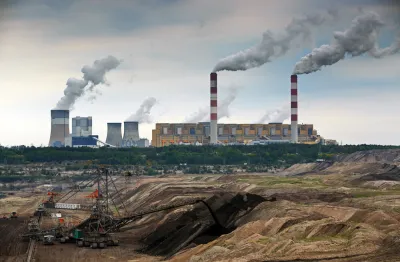For a second time, the U.S. Supreme Court chose not to hear from 20 states that sought to block implementation of a U.S. Environmental Protection Agency rule on mercury and air toxins that largely affects coal-fired power plants and public health.

The June 13 Supreme Court rejection of the appeal is of vital importance to public health in the United States. Mercury, like lead, is a powerful neurotoxin. It attacks the nervous system and is particularly harmful to infants and children.
"In the United States, power plants that burn coal to create electricity account for about half of all man-made mercury emissions," according to the Environmental Protection Agency (EPA). "The main way that people are exposed to mercury is by eating fish and shellfish that have high levels of methylmercury."
"The Supreme Court on Monday left intact a key Obama administration environmental regulation, refusing to hear an appeal from 20 states seeking to block rules that limit the emissions of mercury and other toxic pollutants from the nation’s power plants," writes Brady Dennis, environmental reporter for The Washington Post.
The high court’s decision leaves in place a lower-court ruling that found that the regulations, put in place several years ago by the Environmental Protection Agency, could remain in effect while the agency revised the way it had calculated the potential industry compliance costs. The EPA finalized its updated cost analysis in April.
"The EPA estimates that MATS will prevent up to 11,000 premature deaths and more than 100,000 asthma and heart attacks each year," notes the Sierra Club's press release on the Supreme Court's rejection of the appeal. It also provides an excellent review of the court case, which is helpful because following the trail of federal court rulings on the EPA's Mercury and Air Toxic Standards (MATS) rule is not so easy.
Almost a year ago, Planetizen managing editor James Brasuell posted that the Supreme Court "ruled 5-4 against regulations by the Environmental Protection Agency to limit emissions of mercury and other air pollutants." However, it also "allowed the rule to stay in effect and returned it to the U.S. Court of Appeals for the District of Columbia Circuit to decide how the cost-benefit analysis should be conducted," wrote Sarah Tincher, energy reporter for WOWK-TV in West Virginia on December 18, 2015.
The Dec. 15 ruling by a three-judge federal appeals court panel "upheld the higher court’s decision, requiring power plants to continue to comply with the MATS standard while EPA continues to work on considering costs," adds Tincher.
"In March... Chief Justice John G. Roberts Jr. rejected a request to stay the Mercury and Air Toxic Standards rule," writes Dennis for The Post. "More than 20 states had joined a lawsuit opposing the MATS rule, arguing that the controversial pollution controls mandated by the regulation are too expensive relative to the health benefits."
In April, the EPA issued an updated analysis of the estimated costs and benefits of the regulations, arguing that the cost for the industry to comply would amount to a fraction of annual revenue and probably would not lead to steep increases in customer bills. As the fight over the MATS rule has worked its way through the courts in recent years, many utilities have already complied with the new requirements.
And that brings us to Monday's decision by the Supreme Court to reject the appeal from the 20 states.
"According to the EPA, the rule applies to about 1,400 electricity-generating units at 600 power plants," writes Lawrence Hurley, Supreme Court correspondent for Reuters.
The mercury rules are separate from Obama administration regulations intended to curb carbon dioxide emissions that the Supreme Court put on hold on Feb. 9 in a legal challenge brought by 27 states and others. [See more posts on Clean Power Plan Rule.]
One final note to acknowledge Vox's David Roberts, who opined last year that Supreme Court's June 29 ruling "is probably not going to change the mercury regulations."
FULL STORY: Supreme Court rejects case challenging key White House air pollution regulation

Analysis: Cybertruck Fatality Rate Far Exceeds That of Ford Pinto
The Tesla Cybertruck was recalled seven times last year.

National Parks Layoffs Will Cause Communities to Lose Billions
Thousands of essential park workers were laid off this week, just before the busy spring break season.

Retro-silient?: America’s First “Eco-burb,” The Woodlands Turns 50
A master-planned community north of Houston offers lessons on green infrastructure and resilient design, but falls short of its founder’s lofty affordability and walkability goals.

Test News Post 1
This is a summary

Analysis: Cybertruck Fatality Rate Far Exceeds That of Ford Pinto
The Tesla Cybertruck was recalled seven times last year.

Test News Headline 46
Test for the image on the front page.
Urban Design for Planners 1: Software Tools
This six-course series explores essential urban design concepts using open source software and equips planners with the tools they need to participate fully in the urban design process.
Planning for Universal Design
Learn the tools for implementing Universal Design in planning regulations.
EMC Planning Group, Inc.
Planetizen
Planetizen
Mpact (formerly Rail~Volution)
Great Falls Development Authority, Inc.
HUDs Office of Policy Development and Research
NYU Wagner Graduate School of Public Service



























